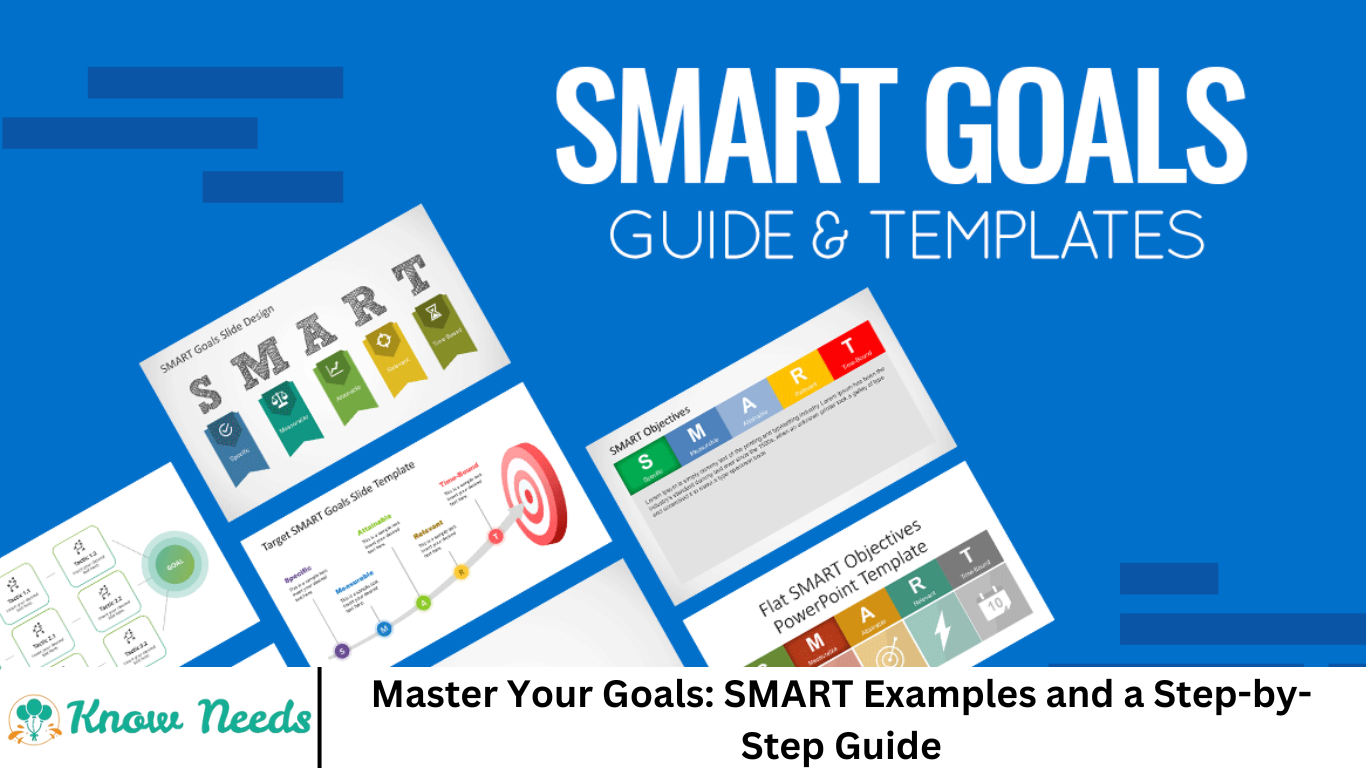Setting goals is one of the most powerful tools you have to improve your life, boost your career, and achieve personal success. But goals that are vague or unrealistic often lead to frustration and failure. That’s why mastering the art of setting SMART goals is crucial to turning your dreams into actionable plans with measurable progress.
You’ll learn what SMART goals are, why they work, and how to create them step-by-step, with plenty of SMART goals examples to inspire you. Whether you want to improve your fitness, advance in your career, or manage your time better, this guide will help you design clear, achievable goals that get results.
More Read: Strengthening Supply Chain Resilience Amid Uncertainty
What Are SMART Goals?
SMART is an acronym that stands for:
- Specific
- Measurable
- Achievable
- Relevant
- Time-bound
Each element of this framework is designed to create goals that are clear and attainable, avoiding the pitfalls of vague or overly ambitious objectives.
Why Use SMART Goals?
SMART goals provide a clear roadmap, helping you focus your efforts, track progress, and stay motivated. Research shows that people who set well-defined goals are more likely to succeed. The SMART framework breaks down the goal-setting process into manageable parts, ensuring that your objectives are realistic and aligned with your values.
Breaking Down the SMART Framework
1. Specific
A specific goal answers the “who,” “what,” “where,” “when,” and “why.” It leaves no room for ambiguity.
- Instead of “Get in shape,” try “Run a 5K race in my city by September.”
- Instead of “Improve sales,” try “Increase sales by 15% in the next quarter through targeted email campaigns.”
2. Measurable
To know if you’re making progress, your goal must be measurable. You need concrete criteria to track your success.
- “Lose 10 pounds” instead of “Lose weight.”
- “Read 2 books per month” instead of “Read more.”
3. Achievable
An achievable goal is realistic given your current resources and constraints. It should challenge you but still be possible.
- If you’ve never run before, aiming to run a marathon in one month isn’t achievable.
- Setting a goal to increase website traffic by 5% might be more realistic if you’re just starting out.
4. Relevant
A relevant goal aligns with your broader objectives, values, and long-term plans.
- If your main career focus is marketing, setting a goal to improve marketing skills is relevant.
- Avoid goals that don’t contribute meaningfully to your priorities.
5. Time-bound
Every goal needs a deadline. A time-bound goal has a clear timeframe that creates urgency.
- “Finish writing my novel by December 31st.”
- “Save $2,000 for a vacation in six months.”
How to Set SMART Goals: Step-by-Step Guide
Follow these steps to create SMART goals tailored to your personal or professional life.
Step 1: Define Your Vision
Start by asking yourself what you truly want to achieve. What’s your long-term vision? This big-picture thinking sets the stage for meaningful goals.
Step 2: Break Down the Vision into Specific Goals
Turn your vision into clear, specific goals. Use the “Specific” element of SMART to write down what you want.
Step 3: Make Your Goals Measurable
Add metrics or milestones to track your progress. What numbers, dates, or tangible signs will show you’re on track?
Step 4: Assess Achievability
Be honest about your skills, time, and resources. Adjust your goal to make sure it’s challenging but realistic.
Step 5: Check Relevance
Make sure your goals fit with your overall priorities. If you have multiple goals, rank them by importance.
Step 6: Set Deadlines
Put a clear timeline on each goal. Deadlines keep you accountable and motivated.
SMART Goals Examples for Different Areas of Life
To help you get started, here are examples of SMART goals in various categories:
Personal Development
- Specific: Read one personal development book every month.
- Measurable: Track reading progress and summarize key takeaways.
- Achievable: Dedicate 20 minutes a day to reading.
- Relevant: Improve knowledge and skills to support career growth.
- Time-bound: Complete 12 books by the end of the year.
Fitness and Health
- Specific: Jog 3 times a week for 30 minutes.
- Measurable: Use a running app to log workouts.
- Achievable: Start with slow jogging and build stamina gradually.
- Relevant: Improve cardiovascular health and reduce stress.
- Time-bound: Maintain the routine for 3 months.
Career and Business
- Specific: Complete an online certification in digital marketing.
- Measurable: Pass the certification exam with at least 85%.
- Achievable: Dedicate 5 hours per week to study.
- Relevant: Enhance marketing skills for a promotion.
- Time-bound: Finish the course within 4 months.
Financial Goals
- Specific: Save $500 monthly for an emergency fund.
- Measurable: Monitor savings account balance weekly.
- Achievable: Cut unnecessary expenses to free up funds.
- Relevant: Build financial security.
- Time-bound: Reach $6,000 in savings by year-end.
Time Management
- Specific: Use a daily planner to schedule all work tasks.
- Measurable: Track completed tasks at the end of each day.
- Achievable: Allocate 10 minutes each morning to plan.
- Relevant: Increase productivity and reduce stress.
- Time-bound: Implement for 30 consecutive days.
Tips to Stay on Track with Your SMART Goals
1. Write Them Down
Documenting your goals increases commitment and keeps your objectives visible.
2. Break Goals into Smaller Tasks
Divide large goals into bite-sized tasks to avoid overwhelm and maintain momentum.
3. Review Progress Regularly
Set weekly or monthly check-ins to assess your progress and adjust as needed.
4. Celebrate Milestones
Reward yourself when you hit milestones to stay motivated.
5. Stay Flexible
If circumstances change, don’t be afraid to revisit and revise your goals.
Common Mistakes to Avoid When Setting SMART Goals
- Being too vague: Avoid unclear goals like “get better at marketing.”
- Setting unrealistic targets: Overambitious goals can lead to burnout.
- Ignoring the timeline: Without deadlines, goals lose urgency.
- Not aligning goals with values: This can reduce motivation.
- Failing to track progress: Without measurement, it’s hard to know if you’re improving.
Frequently Asked Question
What does SMART stand for in goal setting?
SMART is an acronym that stands for Specific, Measurable, Achievable, Relevant, and Time-bound. It’s a framework designed to help you set clear and actionable goals that are more likely to lead to success.
Why are SMART goals important?
SMART goals help increase focus, motivation, and accountability. By making your goals specific and measurable with a clear deadline, you’re more likely to stay on track and see real progress.
Can SMART goals be used for personal and professional development?
Yes! SMART goals work for both personal and professional growth. Whether you’re aiming to build better habits, improve your health, or advance your career, SMART goals provide structure and clarity.
How do I know if my goal is achievable?
A goal is achievable if it’s realistic given your current time, skills, and resources. It should challenge you, but not be so far out of reach that it becomes discouraging.
What’s an example of a bad goal vs. a SMART goal?
- Bad Goal: “I want to be healthier.”
- SMART Goal: “I will walk 30 minutes every weekday for the next 3 months to improve my physical health.”
The SMART goal is clear, actionable, and trackable.
How often should I review my SMART goals?
You should review your SMART goals regularly—weekly or monthly—to monitor progress, make adjustments if needed, and stay motivated.
What should I do if I don’t meet a SMART goal?
If you miss a goal, don’t get discouraged. Reflect on what went wrong, adjust the goal if necessary, and try again. Goal-setting is a learning process, and setbacks are a natural part of growth.
Conclusion
Mastering your goals is all about clarity, focus, and commitment. The SMART goal framework provides a proven method to design goals that are not only inspiring but also achievable. By following the step-by-step guide and using real-world examples, you can take control of your personal and professional growth and see tangible results. Start today by defining your own SMART goals—whether it’s advancing your career, improving health, managing finances, or boosting productivity. Remember, the key to success is not just dreaming big but planning smart.


